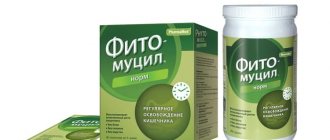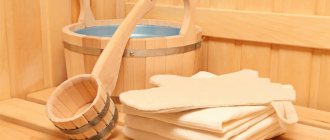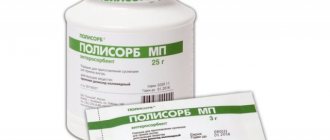Tatiana Smirnova
Girls, I welcome everyone! Question on topic: How many of you consciously planned to have a baby without a man nearby? What arguments were in your mind? How did you even prepare yourself for such single parenthood? How did your life with your child turn out in the end?
501
Amina Yusupova
256
Katerina Snegina
Are you deceiving children for the greater good? Let's say that the cutlet grows on a tree and is not made from... a killed chicken? Otherwise there won’t be any food. Or - it was a trivial thing: I once told a little one that tick-tock sweets are only for those who smoke. I said and forgot. And after a while the child comes in tears - they laughed, but he seriously proved to them, they say, mom says that! I haven't lied since then. But people practice it quite well - they supposedly protect the psyche or fence it off from the bad type. And then suddenly rrrrr! And you have no authority. Do you agree?
155
In addition, maternity leave may be reduced to one year or up to 9 months. However, there is also the possibility, on the contrary, to increase it to three years. But the total amount of payments will remain unchanged, but the monthly payment will change. For a one-year maternity leave it will be 80% of the salary, for a 9-month maternity leave - 60%, and for a three-year leave - 20%. The author of the idea said that the law may come into force no earlier than next year. How do you like this idea?
129 3 votes, average rating: 3.33 out of 5
It is not so easy to choose a laxative for a mother during breastfeeding. After all, many drugs are prohibited during this period. They are excreted in breast milk and can harm the baby. But we need to somehow fight constipation; during this period of a woman’s life, they occur quite often. Doctors recommend changing your diet, moving more, and taking medications or taking suppositories that are not dangerous for the baby. Only a doctor should prescribe them.
Causes and symptoms of constipation
Breastfeeding mothers experience constipation for many reasons. This phenomenon is not as common as during pregnancy. But during lactation, the intestines work worse than usual. The causes of constipation during breastfeeding in a mother are as follows:
- Hormonal imbalance.
- Displacement of intestinal loops that did not have time to fall into place after bearing a child.
- Lacerations, vaginal incisions during childbirth, hemorrhoids.
- Weakening of the pelvic floor muscles.
- Changing your diet, which is dominated by foods low in fiber.
- Limited number of trips to the toilet due to busy schedules.
- Low physical activity.
- Taking iron supplements, antacids, vitamins.
- Abuse of laxatives on the eve of childbirth.
- Diseases of internal organs.
After childbirth, the amount of progesterone in a woman’s blood remains elevated, which reduces peristalsis. In addition, the intestinal loops do not immediately fall into place, which can also lead to constipation. Many people advise mothers to eat less fruits and vegetables when feeding so that the child does not have allergies. Such nutrition does not have the best effect on bowel regularity. A nursing woman, with a newborn in her arms, moves little, and often does not even have time to go to the toilet. All these factors together lead to the fact that the mother has to take laxatives.
Constipation symptoms
When does irregular bowel movements constitute true constipation and require a laxative? It is believed that bowel movements less than three times a week should already be alarming. The following symptoms appear with constipation:
- The feces are hard, difficult to pass, and the amount is less than 40 grams.
- In the toilet, mom has to make an effort to defecate.
- After defecation, there remains a feeling of fullness in the intestines.
- Gases accumulate in the stomach and it becomes bloated.
- Colic-type pain appears.
- With prolonged constipation, weakness, drowsiness, and loss of appetite may occur.
If symptoms appear, you should consult a doctor. He will prescribe a laxative suitable for breastfeeding and advise on how to adjust the diet.
What laxatives can you take?
Doctors recommend that a nursing mother drink a laxative, which acts exclusively in the large intestine and is absorbed into the blood in minimal quantities. Then the drug will definitely not pass into breast milk and will not harm the baby. During this period you can take:
- Gutalax
- Chitosan-evalar
- Bisacodyl
- Duphalac
- Fortrans
- Forlax.
The effects of these drugs are different. Gutalax and bisacodyl stimulate the nerve endings in the colon, increasing its peristalsis. Chitosan-Evalar contains aminopolysaccharides and microcrystalline cellulose, which absorb toxic products and increase osmotic pressure in the intestines, thereby creating a laxative effect.
Forlax contains a component that is able to retain water in the intestines. This softens the stool and makes it easier to remove. The main active ingredient of Duphalac is lactulose, which increases osmotic pressure in the colon. This laxative acts during lactation not only as a remedy for constipation. Lactulose serves as a breeding ground for beneficial bacteria, improving the condition of the intestinal flora. Fortran is a saline laxative with a powerful effect. It is prescribed for prolonged constipation, as an alternative to a cleansing enema.
In addition to tablets, you can take laxatives during breastfeeding in the form of suppositories or microenemas. Glycerin suppositories are effective and safe; in addition, they cost pennies. Not long ago, the drug Microlax appeared on the market, available in the form of a microenema. It quickly relieves symptoms. It can be prescribed not only to a nursing mother, but also to a baby from the first days of life. Under no circumstances should sena-based products be prescribed while breastfeeding; it can cause colic and bloating in the baby. In addition, hay is addictive.
Laxative after caesarean section
The nature of constipation caused by operations using general anesthesia is different from the consequences of natural childbirth. The drug, which is used for caesarean section, has an “inhibiting” effect on the functioning of the intestines, which leads to atonic constipation.
A distinctive feature of this type of defecation difficulty is excessive relaxation of the intestine, with subsequent disruption of its peristalsis. The situation is aggravated by the use of antibiotics, which are prescribed to almost every woman in labor after surgery. This leads to disruption of the intestinal microflora, which is responsible for the intestines performing their functions.
Laxatives after cesarean section must include prebiotics. For example, Goodluck, Lactulose Poly, Hilak Forte. Along with these medications, you should also take probiotics - Bifiform, Linex, Enterol.
To ease stool, suppositories that have a local effect on the intestines are also suitable - Glycerin, Bisacodyl, Ferrolax, Preparation H.
Please note that decisions about whether a particular laxative can be taken while breastfeeding should only be made by a qualified professional. Self-medication should not be done under any circumstances - this can lead to a deterioration in the mother’s condition and harm the baby’s health.
Remember that almost all drugs for normalizing stool become addictive after 7-14 days, and many even earlier. Therefore, taking medications should be alternated, replacing them with medications whose active ingredients differ from each other.
Tatiana Smirnova
Girls, I welcome everyone! Question on topic: How many of you consciously planned to have a baby without a man nearby? What arguments were in your mind? How did you even prepare yourself for such single parenthood? How did your life with your child turn out in the end?
501
Amina Yusupova
256
Katerina Snegina
Are you deceiving children for the greater good? Let's say that the cutlet grows on a tree and is not made from... a killed chicken? Otherwise there won’t be any food. Or - it was a trivial thing: I once told a little one that tick-tock sweets are only for those who smoke. I said and forgot. And after a while the child comes in tears - they laughed, but he seriously proved to them, they say, mom says that! I haven't lied since then. But people practice it quite well - they supposedly protect the psyche or fence it off from the bad type. And then suddenly rrrrr! And you have no authority. Do you agree?
155
In addition, maternity leave may be reduced to one year or up to 9 months. However, there is also the possibility, on the contrary, to increase it to three years. But the total amount of payments will remain unchanged, but the monthly payment will change. For a one-year maternity leave it will be 80% of the salary, for a 9-month maternity leave - 60%, and for a three-year leave - 20%. The author of the idea said that the law may come into force no earlier than next year. How do you like this idea?
129
Senade (sennosides A and B) is a contact laxative of plant origin, produced in the homeland of Mahatma Gandhi and Jawaharlal Nehru. This is another drug from a countless number of Indian generics that have firmly established themselves on Russian shelves and constitute serious competition for more expensive original drugs, not to mention domestic ones, which, to be honest, are not always in the heart of the average Russian consumer of medicines. Moreover, the senade has no domestic analogue. Contact laxatives are today perhaps the most popular of all groups of drugs that help relieve the heap of gastrointestinal problems and bring revolutionary revitalization to the period of stagnation established in the gastrointestinal tract. Medicines based on senna have been familiar to physicians for centuries: their popularity is due to their therapeutic effectiveness and relative cheapness. The leaves of senna (cassia) are used as medicinal plant raw materials for the production of senna preparations, which in the old days, due to logistical features (it arrived in Russia bypassing the Egyptian port of Alexandria), was called “Alexandria leaf”. The pharmacologically active substances with which the plant is packed to capacity are represented by sennosides, namely: anthraglycosides, anthraquinones, emodin, aloe-emodin, rhein and other phytocompounds. These substances have a local irritant effect on the chemoreceptors of the large intestine and enhance its peristalsis. The laxative effect begins to manifest itself 8-10 hours after administration.
Senade (this drug is available exclusively in tablets) is a standardized dry extract of senna leaves, containing a dose of sennosides calibrated with pinpoint accuracy and devoid of plant “garbage” in the form of resinous and other compounds that can cause undesirable side reactions - general weakness, nausea, bloating abdomen and spasmodic colic. Sennosides, in addition to stimulating peristaltic contractions and activating the process of bowel movement, promote the secretion of water into the intestinal lumen, which increases the volume of its contents and strengthens the reasoned urge to defecate. Sennosides are practically non-toxic and are in no way associated with the risk of developing neoplasms in the digestive tract.
The rules for taking senade are not particularly sophisticated: 1 tablet 1 time per day (if there is no expected effect, you can add 2-3 more tablets) before going to bed (adults and children over 12 years old) or half a tablet with the possibility of increasing the dose up to 1-2 tablets (for children 6-12 years old). To select the optimal dosage regimen, it is recommended to take the same dose for at least several days, gradually increasing it (in ½ tablet increments). Once you reach the maximum (3 tablets), you should wait another 3 days and if there is no bowel movement, you must consult a doctor. According to general recommendations, the duration of taking senade should not exceed 2 weeks. While taking the drug, urine may surprise you with a bizarre color range from red-lilac to yellow-brown. There is no need to be afraid: this is a normal state of affairs.
Pharmacology
Herbal laxative. It has a laxative effect that occurs after 8-10 hours. The laxative effect is due to the effect on the receptors of the large intestine, enhancing peristalsis.
Pharmacokinetics
In accordance with the International Convention (EMEAHMPWG11/99), when conducting clinical trials of herbal preparations, an isolated study of pharmacokinetic parameters is not required.
Release form
Tablets are brown to dark brown, flecked, flat, round, with beveled edges, embossed with the word "CIPLA" on one side and a break line on the other.
Excipients: lactose - 23.07 mg, starch - 43.56 mg, methyl parahydroxybenzoate - 0.04 mg, microcrystalline cellulose - 15 mg, talc - 11.13 mg, magnesium stearate - 0.93 mg, sodium lauryl sulfate - 0.93 mg, sodium carmellose - 2 mg.
20 pcs. - blisters (2) - cardboard packs. 20 pcs. - blisters (3) - cardboard packs. 20 pcs. - blisters (25) - cardboard boxes.
Dosage
The drug is prescribed orally, usually 1 time/day in the evening before bedtime, with water or some drink.
Adults and children over 12 years old - 1 tablet. 1 time/day If there is no effect, the dose can be increased to 2-3 tablets.
Children aged 6-12 years are prescribed 1/2 tablet. 1 time/day and, if necessary, increase the dose to 1-2 tablets.
During the selection process, the same dose should be taken for several days and gradually increased by 1/2 tablet. If, after reaching the maximum dose, bowel movements do not occur within 3 days, you should consult a doctor.
Overdose
Symptoms: Diarrhea leading to dehydration.
Treatment: Increasing fluid intake is usually sufficient to compensate for the loss of fluid and electrolytes. In some cases, it is necessary to replenish the loss of fluid and electrolytes using intravenous infusions of plasma substitutes.
Interaction
With long-term use of Senade ® in high doses, it is possible to enhance the effect of cardiac glycosides and influence the effect of antiarrhythmic drugs due to the possibility of developing hypokalemia.
When used simultaneously with thiazide diuretics, corticosteroids, and licorice root preparations, the risk of developing hypokalemia increases.
Side effects
From the digestive system: possible colicky abdominal pain, flatulence; with long-term use, especially in high doses, melanin deposition in the intestinal mucosa, nausea, vomiting, and diarrhea are possible.
From the metabolic side: with long-term use, especially in high doses, disturbances in water-electrolyte metabolism and melanin deposition in the intestinal mucosa are possible.
From the urinary system: with long-term use, especially in high doses, albuminuria, hematuria, and discoloration of urine are possible.
From the side of the central nervous system: with prolonged use, especially in high doses, convulsions, fatigue, and confusion are possible.
Dermatological reactions: with prolonged use, especially in high doses, skin rash is possible.
From the cardiovascular system: with long-term use, especially in high doses, vascular collapse is possible.
Indications
- constipation caused by hypotension and sluggish peristalsis of the large intestine;
- regulation of stool for hemorrhoids, proctitis, anal fissures.
Contraindications
- spastic constipation;
- intestinal obstruction;
- abdominal pain of unknown origin;
- strangulated hernia;
- acute inflammatory diseases of the abdominal cavity;
- peritonitis;
- gastrointestinal and uterine bleeding;
- cystitis;
- disturbances of water and electrolyte metabolism;
- hypersensitivity to the components of the drug.
Prescribed with caution for liver and/or kidney diseases, during pregnancy, during breastfeeding, and in conditions after abdominal surgery.
Features of application
Use during pregnancy and breastfeeding
Senade should be prescribed with caution during pregnancy and breastfeeding.
Use for liver dysfunction
Prescribe with caution for liver diseases.
Use for renal impairment
Prescribe with caution for kidney disease.
Use in children
special instructions
After taking the drug, urine may become yellow-brown or red-lilac in color.
Use in pediatrics
The drug is used in children aged 6 years and older.
Folk remedies for constipation
Many women during breastfeeding try to cope with constipation with folk remedies. They have a good effect, but before use you should consult a doctor. We offer several recipes that help improve bowel movements during lactation:
- Prune decoction. About 20 grams of dried berries are poured with 200 ml of water, brought to a boil, and left for an hour. Drink three glasses 3-4 times a day.
- Fig infusion. Take 50 grams of dry fruit, chop them, pour 200 ml of boiling water over them and leave for an hour. You can replace the water with milk to achieve a better effect. You should drink a tablespoon, 3-4 times a day.
- Gooseberry decoction. It can be prepared in the season when there are ripe gooseberries. About 15 grams of berries are poured into 200 ml of water, brought to a boil and kept on low heat for another 10 minutes, at the end add a few dried apples. You need to drink 100 ml three times a day.
- Take 20 grams of anise fruit, caraway seeds and fennel seeds, pour 200 ml of warm water, leave for 20 minutes, drink 75 ml three times a day. The infusion is good for constipation associated with intestinal atony.
- Herbal collection. Take a tablespoon of anise, dried strawberry and mint leaves, grated valerian root, dried medicinal chamomile flowers. Pour a liter of boiling water and leave for an hour and a half. Drink half a glass after meals, in the morning and in the evening.
- Raw potato juice is also a good laxative. It is half diluted with boiled water, drink 50 ml three times a day.
When taking decoctions and infusions while breastfeeding, you should carefully monitor the baby's condition. Some of their components can cause allergies in infants.
Are there any good traditional methods for relieving constipation?
During feeding, you can use folk remedies. It is worth remembering that herbal treatment must be carried out with the permission of a specialist. Plants contain active substances that can adversely affect the child's condition.
For effective treatment of hemorrhoids, our readers advise. This natural remedy quickly relieves pain and itching, promotes the healing of anal fissures and hemorrhoids. The drug contains only natural ingredients with maximum effectiveness. The product has no contraindications, the effectiveness and safety of the drug has been proven by clinical studies at the Research Institute of Proctology.
The following safe means can be used:
- Prunes have a mild laxative effect. During lactation it is recommended to use decoctions and infusions from it.
- A decoction of figs, which is prepared from two spoons of the product and hot water, also shows good results. The infusion is taken one tablespoon several times a day.
- You can prepare an infusion of dried apples and gooseberries.
- Beets, carrots, pumpkin, watermelon and apricot have laxative properties. They need to be introduced into the diet very carefully, in small portions. At the same time, you need to carefully monitor the baby’s reaction to the new product.
- During lactation, you can use vegetable oils, olive oil is especially recommended.
- A good remedy is potato juice made from raw potatoes. It should be diluted in half with water and taken half an hour before meals, 50 ml.
If a woman suffers from spastic constipation, then you can make a decoction of anise, mint, chamomile, valerian roots, strawberry leaves and nettle. Take 20 g of this mixture, pour boiling water and infuse it in a thermos, take the infusion after meals.
For atonic constipation, the following recipe can help: anise, fennel and cumin are poured with hot water and infused; the decoction must be taken before meals. Before taking herbal infusions, you should definitely consult your doctor.
In addition, do not forget about regular consumption of clean water. Plain water remarkably stimulates intestinal motility. It is important to drink a glass of warm water in the morning, immediately after sleep.
Diet
Proper nutrition is the main guarantee that a woman will not have problems with bowel movements. The diet should include foods rich in coarse fiber. Don't be afraid that your baby will develop allergies or develop colic. Many commonly accepted limitations are actually imposed by stereotypes. The diet of a nursing mother should include:
- Sour milk, kefir, fermented baked milk, natural yoghurts.
- Vegetables (carrots, red beets, zucchini, pumpkin, cauliflower).
- Fruits and berries.
- Bread made from coarsely ground flour, with bran.
- Thin soups.
- Low-fat meat.
- Vegetable oils.
There are foods that it is advisable to exclude during lactation. They really do not have the best effect on the newborn, and cause problems with bowel movements for the mother. Here is their list:
- Strong tea, cocoa and black coffee.
- Juice from pomegranate, pear, quince, jelly.
- Rice porridge.
When the mother eats normally, but constipation does not go away without laxatives, her health worsens, she needs to go to the doctor. The cause of this condition may be a serious illness that needs to be treated.
Senade (sennosides A and B) is a contact laxative of plant origin, produced in the homeland of Mahatma Gandhi and Jawaharlal Nehru. This is another drug from a countless number of Indian generics that have firmly established themselves on Russian shelves and constitute serious competition for more expensive original drugs, not to mention domestic ones, which, to be honest, are not always in the heart of the average Russian consumer of medicines. Moreover, the senade has no domestic analogue. Contact laxatives are today perhaps the most popular of all groups of drugs that help relieve the heap of gastrointestinal problems and bring revolutionary revitalization to the period of stagnation established in the gastrointestinal tract. Medicines based on senna have been familiar to physicians for centuries: their popularity is due to their therapeutic effectiveness and relative cheapness. The leaves of senna (cassia) are used as medicinal plant raw materials for the production of senna preparations, which in the old days, due to logistical features (it arrived in Russia bypassing the Egyptian port of Alexandria), was called “Alexandria leaf”. The pharmacologically active substances with which the plant is packed to capacity are represented by sennosides, namely: anthraglycosides, anthraquinones, emodin, aloe-emodin, rhein and other phytocompounds. These substances have a local irritant effect on the chemoreceptors of the large intestine and enhance its peristalsis. The laxative effect begins to manifest itself 8-10 hours after administration.
Senade (this drug is available exclusively in tablets) is a standardized dry extract of senna leaves, containing a dose of sennosides calibrated with pinpoint accuracy and devoid of plant “garbage” in the form of resinous and other compounds that can cause undesirable side reactions - general weakness, nausea, bloating abdomen and spasmodic colic. Sennosides, in addition to stimulating peristaltic contractions and activating the process of bowel movement, promote the secretion of water into the intestinal lumen, which increases the volume of its contents and strengthens the reasoned urge to defecate. Sennosides are practically non-toxic and are in no way associated with the risk of developing neoplasms in the digestive tract.
The rules for taking senade are not particularly sophisticated: 1 tablet 1 time per day (if there is no expected effect, you can add 2-3 more tablets) before going to bed (adults and children over 12 years old) or half a tablet with the possibility of increasing the dose up to 1-2 tablets (for children 6-12 years old). To select the optimal dosage regimen, it is recommended to take the same dose for at least several days, gradually increasing it (in ½ tablet increments). Once you reach the maximum (3 tablets), you should wait another 3 days and if there is no bowel movement, you must consult a doctor. According to general recommendations, the duration of taking senade should not exceed 2 weeks. While taking the drug, urine may surprise you with a bizarre color range from red-lilac to yellow-brown. There is no need to be afraid: this is a normal state of affairs.
Pharmacology
Herbal laxative. It has a laxative effect that occurs after 8-10 hours. The laxative effect is due to the effect on the receptors of the large intestine, enhancing peristalsis.
Pharmacokinetics
In accordance with the International Convention (EMEAHMPWG11/99), when conducting clinical trials of herbal preparations, an isolated study of pharmacokinetic parameters is not required.
Release form
Tablets are brown to dark brown, flecked, flat, round, with beveled edges, embossed with the word "CIPLA" on one side and a break line on the other.
Excipients: lactose - 23.07 mg, starch - 43.56 mg, methyl parahydroxybenzoate - 0.04 mg, microcrystalline cellulose - 15 mg, talc - 11.13 mg, magnesium stearate - 0.93 mg, sodium lauryl sulfate - 0.93 mg, sodium carmellose - 2 mg.
20 pcs. - blisters (2) - cardboard packs. 20 pcs. - blisters (3) - cardboard packs. 20 pcs. - blisters (25) - cardboard boxes.
Dosage
The drug is prescribed orally, usually 1 time/day in the evening before bedtime, with water or some drink.
Adults and children over 12 years old - 1 tablet. 1 time/day If there is no effect, the dose can be increased to 2-3 tablets.
Children aged 6-12 years are prescribed 1/2 tablet. 1 time/day and, if necessary, increase the dose to 1-2 tablets.
During the selection process, the same dose should be taken for several days and gradually increased by 1/2 tablet. If, after reaching the maximum dose, bowel movements do not occur within 3 days, you should consult a doctor.
Overdose
Symptoms: Diarrhea leading to dehydration.
Treatment: Increasing fluid intake is usually sufficient to compensate for the loss of fluid and electrolytes. In some cases, it is necessary to replenish the loss of fluid and electrolytes using intravenous infusions of plasma substitutes.
Interaction
With long-term use of Senade ® in high doses, it is possible to enhance the effect of cardiac glycosides and influence the effect of antiarrhythmic drugs due to the possibility of developing hypokalemia.
When used simultaneously with thiazide diuretics, corticosteroids, and licorice root preparations, the risk of developing hypokalemia increases.
Side effects
From the digestive system: possible colicky abdominal pain, flatulence; with long-term use, especially in high doses, melanin deposition in the intestinal mucosa, nausea, vomiting, and diarrhea are possible.
From the metabolic side: with long-term use, especially in high doses, disturbances in water-electrolyte metabolism and melanin deposition in the intestinal mucosa are possible.
From the urinary system: with long-term use, especially in high doses, albuminuria, hematuria, and discoloration of urine are possible.
From the side of the central nervous system: with prolonged use, especially in high doses, convulsions, fatigue, and confusion are possible.
Dermatological reactions: with prolonged use, especially in high doses, skin rash is possible.
From the cardiovascular system: with long-term use, especially in high doses, vascular collapse is possible.
Indications
- constipation caused by hypotension and sluggish peristalsis of the large intestine;
- regulation of stool for hemorrhoids, proctitis, anal fissures.
Contraindications
- spastic constipation;
- intestinal obstruction;
- abdominal pain of unknown origin;
- strangulated hernia;
- acute inflammatory diseases of the abdominal cavity;
- peritonitis;
- gastrointestinal and uterine bleeding;
- cystitis;
- disturbances of water and electrolyte metabolism;
- hypersensitivity to the components of the drug.
Prescribed with caution for liver and/or kidney diseases, during pregnancy, during breastfeeding, and in conditions after abdominal surgery.
Features of application
Use during pregnancy and breastfeeding
Senade should be prescribed with caution during pregnancy and breastfeeding.
Use for liver dysfunction
Prescribe with caution for liver diseases.
Use for renal impairment
Prescribe with caution for kidney disease.
Use in children
special instructions
After taking the drug, urine may become yellow-brown or red-lilac in color.
Use in pediatrics
The drug is used in children aged 6 years and older.
Difficulties in bowel function are a common problem for women after childbirth, because in the postpartum period they are characterized by some weakening of bowel function. Some mothers benefit from proper nutrition and physical activity in this case, but most should consider taking a laxative.
SENAD
A laxative that stimulates intestinal motility
Active substance
– sennosides A and B calcium salts (in terms of sennoside B) (Senna)
Release form, composition and packaging
◊ Pills
Brown to dark brown flecked, flat, round, beveled edges, embossed with the word “CIPLA” on one side and a break line on the other.
| 1 tab. | |
| senna leaf extract | 93.33 mg, |
| containing the sum of calcium salts of sennosides A and B in terms of sennoside B | 13.5 mg |
Excipients: lactose – 23.07 mg, starch – 43.56 mg, methyl parahydroxybenzoate – 0.04 mg, microcrystalline cellulose – 15 mg, talc – 11.13 mg, magnesium stearate – 0.93 mg, sodium lauryl sulfate – 0.93 mg, sodium carmellose – 2 mg.
20 pcs. – blisters (2) – cardboard packs. 20 pcs. – blisters (3) – cardboard packs.
20 pcs. – blisters (25) – cardboard boxes.
pharmachologic effect
Herbal laxative. It has a laxative effect that occurs after 8-10 hours. The laxative effect is due to the effect on the receptors of the large intestine, enhancing peristalsis.
Pharmacokinetics
In accordance with the International Convention (EMEAHMPWG11/99), when conducting clinical trials of herbal preparations, an isolated study of pharmacokinetic parameters is not required.
Indications
- constipation caused by hypotension and sluggish peristalsis of the large intestine;
- regulation of stool for hemorrhoids, proctitis, anal fissures.
Contraindications
- spastic constipation;
- intestinal obstruction;
- abdominal pain of unknown origin;
- strangulated hernia;
- acute inflammatory diseases of the abdominal cavity;
- peritonitis;
- gastrointestinal and uterine bleeding;
- cystitis;
- disturbances of water and electrolyte metabolism;
- hypersensitivity to the components of the drug.
Carefully _
prescribed for liver and/or kidney diseases, during pregnancy, during breastfeeding, and in conditions after abdominal surgery.
Dosage
The drug is prescribed orally, usually 1 time/day in the evening before bedtime, with water or some drink.
Adults and children over 12 years old –
1 tab. 1 time/day If there is no effect, the dose can be increased to 2-3 tablets.
Children aged 6-12 years
prescribed 1/2 tablet. 1 time/day and, if necessary, increase the dose to 1-2 tablets.
During the selection process, the same dose should be taken for several days and gradually increased by 1/2 tablet. If, after reaching the maximum dose, bowel movements do not occur within 3 days, you should consult a doctor.
From the digestive system:
Possible colicky abdominal pain, flatulence; with long-term use, especially in high doses, melanin deposition in the intestinal mucosa, nausea, vomiting, and diarrhea are possible.
From the side of metabolism:
with long-term use, especially in high doses, disturbances in water-electrolyte metabolism and melanin deposition in the intestinal mucosa are possible.
From the urinary system:
with long-term use, especially in high doses, albuminuria, hematuria, and urine discoloration are possible.
From the side of the central nervous system:
with prolonged use, especially in high doses, convulsions, fatigue, and confusion are possible.
Dermatological reactions:
with prolonged use, especially in high doses, skin rash is possible.
From the cardiovascular system:
with long-term use, especially in high doses, vascular collapse is possible.
Overdose
Symptoms:
diarrhea leading to dehydration.
Treatment:
increasing fluid intake is usually sufficient to compensate for fluid and electrolyte losses. In some cases, it is necessary to replenish the loss of fluid and electrolytes using intravenous infusions of plasma substitutes.
Drug interactions
With long-term use of Senade in high doses, it is possible to enhance the effect of cardiac glycosides and influence the effect of antiarrhythmic drugs due to the possibility of developing hypokalemia.
When used simultaneously with thiazide diuretics, corticosteroids, and licorice root preparations, the risk of developing hypokalemia increases.
special instructions
It is not recommended to use Senade for more than 2 weeks.
After taking the drug, urine may become yellow-brown or red-lilac in color.
Use in pediatrics
The drug is used in children aged 6 years and older
.
Pregnancy and lactation
Senade should be prescribed with caution during pregnancy and breastfeeding.
Use in childhood
The drug is used in children aged 6 years and older.
For impaired renal function
Carefully _
prescribed for kidney diseases.
For liver dysfunction
Carefully _
prescribed for liver diseases.
Conditions for dispensing from pharmacies
The drug is approved for use as a means of OTC.
Storage conditions and periods
The drug should be stored out of the reach of children, in a dry place at a temperature not exceeding 30°C. Shelf life – 3 years.
The description of the drug SENAD is based on the officially approved instructions for use and approved by the manufacturer.
Found an error? Select it and press Ctrl+Enter.
Source: https://health.mail.ru/drug/senade/
Laxatives
The use of medicinal laxatives while breastfeeding causes a lot of controversy among doctors. This is due to the fact that almost every such medicine contains components that can have a negative effect on the baby when they pass into breast milk. Also, taking a laxative for new mothers is not recommended, since long-term use (at least a couple of times a week for 30 days) causes addiction to the drug, which subsequently leads to an increase in the dose of the laxative and aggravation of the problem.
In each specific case, the need to take a medicinal laxative is determined by the doctor. He also prescribes the appropriate medicine and also determines the frequency of its administration. When breastfeeding, mothers are not recommended to use Regulax, Dulcolax, Dr. Theis' Swedish Bitters, Gutalax, Bisacodyl or Chitosan-Evalar in treatment. Laxatives based on senna or Alexandria leaf, for example Glaxenna, Sennalax, Senade, Trisasen, are strictly prohibited. They will not harm the mother’s body, but they will cause colic in the child. Also, any such laxative is contraindicated for nursing mothers, since it increases the muscle tone of the intestines, which is very harmful in the presence of spastic constipation.
During lactation, you can use the drugs Forlax, Duphalac or Fortrans. They do not irritate the intestines at all and will not pass into milk, that is, they are safe for the baby. You can also use laxative suppositories with glycerin for nursing mothers. They act only on the large intestine, and the effect occurs almost instantly (within 15 minutes).
Laxative for nursing mothers
Difficulties in bowel function are a common problem for women after childbirth, because in the postpartum period they are characterized by some weakening of bowel function. Some mothers benefit from proper nutrition and physical activity in this case, but most should consider taking a laxative.
Laxatives
The use of medicinal laxatives while breastfeeding causes a lot of controversy among doctors. This is due to the fact that almost every such medicine contains components that can have a negative effect on the baby when they pass into breast milk. Also, taking a laxative for new mothers is not recommended, since long-term use (at least a couple of times a week for 30 days) causes addiction to the drug, which subsequently leads to an increase in the dose of the laxative and aggravation of the problem.
In each specific case, the need to take a medicinal laxative is determined by the doctor. He also prescribes the appropriate medicine and also determines the frequency of its administration. When breastfeeding, mothers are not recommended to use Regulax, Dulcolax, Dr. Theis' Swedish Bitters, Gutalax, Bisacodyl or Chitosan-Evalar in treatment. Laxatives based on senna or Alexandria leaf, for example Glaxenna, Sennalax, Senade, Trisasen, are strictly prohibited. They will not harm the mother’s body, but they will cause colic in the child. Also, any such laxative is contraindicated for nursing mothers, since it increases the muscle tone of the intestines, which is very harmful in the presence of spastic constipation.
During lactation, you can use the drugs Forlax, Duphalac or Fortrans. They do not irritate the intestines at all and will not pass into milk, that is, they are safe for the baby. You can also use laxative suppositories with glycerin for nursing mothers. They act only on the large intestine, and the effect occurs almost instantly (within 15 minutes).
Folk recipes
If a nursing mother does not want to use any of the approved drugs, then you can use a remedy prepared according to one of the traditional medicine recipes. It is very important to be careful when using traditional medicine recipes, since plants contain active substances that do not always have a positive effect on the body of the mother and child. It is best to consult your doctor before starting.
Prunes are an excellent remedy for constipation. From this dried fruit you can make decoctions and infusions (20 g of product per 200 ml of water), which you need to drink 200 ml 3 times a day. There are practically no allergies to this dried fruit, so feel free to introduce it into your diet, even in its pure form. It is also great for relieving constipation.
An effective home remedy for normalizing the functioning of the gastrointestinal tract for nursing mothers is also made from figs: pour 50 g of fruit into 200 ml and let the mixture cool. A good remedy will also work if you replace the water with milk. Take this infusion 20 ml 3 times a day.
You can get rid of constipation forever with the help of gooseberry decoction. To make it, you need to pour 15 g of berries into 200 ml of water and put the mixture on fire. After boiling, the product should be kept on the fire for about 10 minutes. You can add 50 g of dried apples to this composition. Drink this infusion 3 times a day, 100 ml.
For atonic constipation, the following recipe helps perfectly: 20 g of anise, cumin and fennel fruits, mixed in equal parts, pour 200 ml of warm filtered water and leave for 20 minutes. Take the infusion 75 ml 3 times a day 30 minutes before meals . If mommy suffers from spastic constipation, then you can make a medicine from a herbal mixture. To do this, mix anise fruits, stinging nettle herb, strawberry and peppermint leaves (dry), valerian rhizomes and chamomile flowers in equal parts, and then pour 20 g of the mixture with a glass of boiling water in a thermos and leave to steep for 1.5 hours. Take this remedy, which helps restore the functioning of the gastrointestinal tract, 100 ml in the morning and evening (only after meals).
Products such as:
- carrot;
- watermelon;
- beet;
- pumpkin;
- apricot.
These laxative products can be introduced into the diet at your discretion, depending on the presence or absence of an allergy in the child to each specific product.
Also, natural remedies for constipation that can be consumed while breastfeeding include various vegetable oils. The best of them is olive oil.
Potato juice is also an effective laxative. Make juice and dilute it with filtered water 1 to 1. Take it 50 ml 2 times a day (always 30 minutes before meals).
You can make a good remedy from oregano herb, rowan fruits, blackberry leaves, nettle herb (preferably stinging nettle) and fennel fruits. You need to mix equal parts of the ingredients and pour 20 g of the collection into 200 ml of warm water in a thermos. The mixture must be left for an hour and a half, then filtered and only then taken 75 ml 3 times a day.
Plain water perfectly stimulates intestinal motility. Therefore, if a nursing mother does not want to take any remedy, you can try to get rid of constipation using plain water. A woman simply needs to drink 200 ml of warm water every morning on an empty stomach.
Recommendations for women
Homemade and synthetic laxatives will only work if the mother follows some dietary rules, since there are products that are laxative, and there are those that cause constipation. For example, you cannot treat weakened intestinal function and eat large quantities of slimy soups, semolina porridge, polished rice, quince, currants, wheat bran, strawberries, white bread and drink strong tea. Walnuts, legumes and hard cheeses can also slow down peristalsis.
In addition to the fact that you need to drink a lot, a nursing mother should keep in mind that caffeine-containing drinks dehydrate, that is, it is best to completely exclude them from the diet or limit consumption to 1 cup per day.
Along with treating constipation with laxatives, it is useful for a new mother to take daily short walks and perform light exercises. Of course, you shouldn’t overexert yourself immediately after giving birth; you should do a simple 5-minute exercise. All this will help the body quickly restore good functioning of the digestive tract.
If you liked our article and have something to add, share your thoughts. It is very important for us to know your opinion!
woman-v.ru
Folk recipes
If a nursing mother does not want to use any of the approved drugs, then you can use a remedy prepared according to one of the traditional medicine recipes. It is very important to be careful when using traditional medicine recipes, since plants contain active substances that do not always have a positive effect on the body of the mother and child. It is best to consult your doctor before starting.
Prunes are an excellent remedy for constipation. From this dried fruit you can make decoctions and infusions (20 g of product per 200 ml of water), which you need to drink 200 ml 3 times a day. There are practically no allergies to this dried fruit, so feel free to introduce it into your diet, even in its pure form. It is also great for relieving constipation.
An effective home remedy for normalizing the functioning of the gastrointestinal tract for nursing mothers is also made from figs: pour 50 g of fruit into 200 ml and let the mixture cool. A good remedy will also work if you replace the water with milk. Take this infusion 20 ml 3 times a day.
You can get rid of constipation forever with the help of gooseberry decoction. To make it, you need to pour 15 g of berries into 200 ml of water and put the mixture on fire. After boiling, the product should be kept on the fire for about 10 minutes. You can add 50 g of dried apples to this composition. Drink this infusion 3 times a day, 100 ml.
For atonic constipation, the following recipe helps perfectly: 20 g of anise, cumin and fennel fruits, mixed in equal parts, pour 200 ml of warm filtered water and leave for 20 minutes. Take the infusion 75 ml 3 times a day 30 minutes before meals . If mommy suffers from spastic constipation, then you can make a medicine from a herbal mixture. To do this, mix anise fruits, stinging nettle herb, strawberry and peppermint leaves (dry), valerian rhizomes and chamomile flowers in equal parts, and then pour 20 g of the mixture with a glass of boiling water in a thermos and leave to steep for 1.5 hours. Take this remedy, which helps restore the functioning of the gastrointestinal tract, 100 ml in the morning and evening (only after meals).
Products such as:
- carrot;
- watermelon;
- beet;
- pumpkin;
- apricot.
These laxative products can be introduced into the diet at your discretion, depending on the presence or absence of an allergy in the child to each specific product.
Also, natural remedies for constipation that can be consumed while breastfeeding include various vegetable oils. The best of them is olive oil.
Potato juice is also an effective laxative. Make juice and dilute it with filtered water 1 to 1. Take it 50 ml 2 times a day (always 30 minutes before meals).
You can make a good remedy from oregano herb, rowan fruits, blackberry leaves, nettle herb (preferably stinging nettle) and fennel fruits. You need to mix equal parts of the ingredients and pour 20 g of the collection into 200 ml of warm water in a thermos. The mixture must be left for an hour and a half, then filtered and only then taken 75 ml 3 times a day.
Plain water perfectly stimulates intestinal motility. Therefore, if a nursing mother does not want to take any remedy, you can try to get rid of constipation using plain water. A woman simply needs to drink 200 ml of warm water every morning on an empty stomach.
Homemade and synthetic laxatives will only work if the mother follows some dietary rules, since there are products that are laxative, and there are those that cause constipation. For example, you cannot treat weakened intestinal function and eat large quantities of slimy soups, semolina porridge, polished rice, quince, currants, wheat bran, strawberries, white bread and drink strong tea. Walnuts, legumes and hard cheeses can also slow down peristalsis.
In addition to the fact that you need to drink a lot, a nursing mother should keep in mind that caffeine-containing drinks dehydrate, that is, it is best to completely exclude them from the diet or limit consumption to 1 cup per day.
Along with treating constipation with laxatives, it is useful for a new mother to take daily short walks and perform light exercises. Of course, you shouldn’t overexert yourself immediately after giving birth; you should do a simple 5-minute exercise. All this will help the body quickly restore good functioning of the digestive tract.
Often after childbirth, a woman's intestinal motility is impaired. As a result, constipation occurs, which provokes hemorrhoids. How to normalize bowel movements, get rid of cracks, inflammation and pain?
Senade is a popular herbal preparation that has a mild laxative effect. The components of the drug irritate the nerve fibers of the colon, stimulating motility. Is this medication suitable for nursing mothers? More on this later.
Recommendations for women
Homemade and synthetic laxatives will only work if the mother follows some dietary rules, since there are products that are laxative, and there are those that cause constipation. For example, you cannot treat weakened intestinal function and eat large quantities of slimy soups, semolina porridge, polished rice, quince, currants, wheat bran, strawberries, white bread and drink strong tea. Walnuts, legumes and hard cheeses can also slow down peristalsis.
In addition to the fact that you need to drink a lot, a nursing mother should keep in mind that caffeine-containing drinks dehydrate, that is, it is best to completely exclude them from the diet or limit consumption to 1 cup per day.
Along with treating constipation with laxatives, it is useful for a new mother to take daily short walks and perform light exercises. Of course, you shouldn’t overexert yourself immediately after giving birth; you should do a simple 5-minute exercise. All this will help the body quickly restore good functioning of the digestive tract.
Basic information
The drug is produced in the form of tablets, which consist of the following components:
- senna herb extract;
- senosides A and B;
- lactose;
- starch;
- preservative E218;
- microscopic cellulose;
- talc;
- magnesium stearate;
- sodium salt of lauryl sulfuric acid;
- cellulose gum.
The herbal preparation has a laxative effect; its components act on the nerve fibers of the colon, increase its vibrations and accelerate bowel movements.
The drug is prescribed in the following cases:
- constipation, which occurs due to hypotension or poor intestinal motility;
- Difficulty defecating, due to which the walls of the colon become inflamed;
- anal fissures;
- diseases of the digestive tract;
- constipation after childbirth or surgery.
The drug is often used before x-ray examinations.
Dosage
Senade is taken orally, most often once every 24 hours before going to bed. Take the tablet with water or another drink.
Standard dosage:
- for children from 6 to 13 years old – ½ tablet once;
- for patients over 14 years old – 1 piece 1 time per 24 hours.
If after the standard dosage there was no desired effect, then the dose of the medicine is increased:
- the maximum dose for children from 6 to 13 years old is 2 pieces per day;
- for patients over 14 years old – 3 pieces per 24 hours.
If after taking an increased dose of the drug there is no therapeutic effect, consult a doctor.
The course of treatment should not exceed 15 days.
Contraindications
Senade is prohibited from taking in the following cases:
- Partial or complete blockage of the intestines;
- Pinched abdominal hernia;
- Children under 7 years old;
- Hypersensitivity to the components of the drug;
- Abdominal pain of unknown origin;
- Constipation, which occurs due to spasm of the muscles of the colon;
- Inflammation of the peritoneum and retroperitoneal space;
- Dehydration and other disorders of water-salt metabolism;
- Gastrointestinal bleeding;
- Hemorrhages from the uterus.
Under the supervision of a physician, the drug is taken by pregnant and lactating women, patients with functional liver or kidney failure, as well as after surgery on the abdominal organs.
If the dosage is violated, colic, increased gas formation, nausea, vomiting, and diarrhea occur. After long-term use, water and electrolyte balance disorders occur, and melanin is deposited on the intestinal walls. Long-term use of high doses threatens the release of protein and blood into the urine.
Some patients complain of muscle spasms, high fatigue, and impaired consciousness. An allergic reaction in the form of a rash is possible.
An overdose threatens severe diarrhea, which provokes dehydration.
Senade during lactation
Stool upset is a common occurrence for women after childbirth. Sometimes the stool normalizes on its own, and in some cases it is impossible to do without dietary adjustments and medications. Senade is an effective plant-based drug that normalizes stool in a short period of time. The laxative irritates the nerve receptors of the colon, stimulates its motility, and as a result, eliminates constipation and its consequences.
Despite the positive effect of the drug, it is not recommended to take Senade while breastfeeding. The components of the medication penetrate the bloodstream, are excreted in milk and negatively affect the child’s body. After taking the medicine, colic may occur. In addition, laxatives are addictive.
If the doctor prescribed Senade, then the mother should insist on a safer laxative that will not harm the newborn. If it is impossible to replace the medicine, then take it in the dosage determined by the doctor. At the time of treatment, you can stop breastfeeding and transfer the child to artificial formula. To maintain lactation, express milk; natural feeding can be resumed immediately after treatment.
Thus, Senada is allowed to be taken during lactation, but only after a doctor’s permission. To avoid side effects, the mother must strictly follow the recommendations of doctors!











